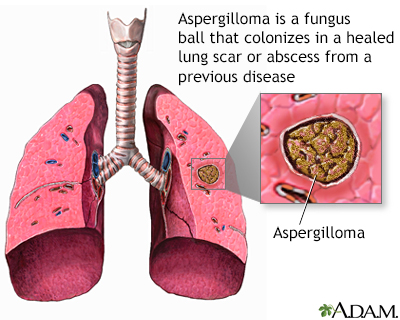| Control mold growth! |
Has allergy testing revealed that you are allergic to molds? No problem! There are some definite action steps you can take to control mold growth, and thus your mold-related symptoms:
- Clean your house regularly, particularly the kitchen and bathroom, to prevent the growth of mold in moist areas.
- Fix leaky plumbing.
- Control temperature and humidity. Central air conditioning is best. Use a dehumidifier to keep the relative humidity at 35 - 50%. Use a simple humidity gauge to regularly measure the humidity level.
- Increase ventilation. While showering or using the dishwasher, use an exhaust fan to remove water vapor from the air.
- Thoroughly clean or remove water-damaged carpet or upholstered furniture.
Where molds hide...
If your house has a musty-smelling, stale odor, you might have a problem with mold growth. Molds often accumulate in the kitchen, bathroom, and basement, where moisture levels are higher than other parts of the house. Molds are actually microscopic fungi that produce spores. In most of the United States, the regular outdoor mold season is from spring to late fall. The season lasts longer in warmer, more humid climates. Indoor mold can grow year-round and cause perennial allergy and asthma symptoms if not properly controlled.
Aside from the damage mold growth can do to furniture and clothing, airborne mold spores can cause a range of symptoms, including a stuffed-up nose, eye irritation, wheezing, shortness of breath, and fever. Exposure to common household molds (such as aspergillus, fusarium) has also been implicated as the main cause of fungal sinusitis. After exposure to certain molds, people with weakened immune systems (such as the elderly or patients who have undergone chemotherapy) are particularly susceptible to life-threatening infection from fungus.

What molds need...
According to John Bower, President of the Healthy House Institute in Bloomington, Indiana, "For mold to grow, there are four requirements: food, air, water, and a good temperature. Since mold will eat almost anything, there is always air available, and mold likes the same temperature as people, the only way to fight it is to control moisture. The best way to deal with mold is to dry it out, clean it up, and keep it dry."
Clean your house weekly, and find the source of any musty odor. Look in the clothes hamper, refrigerator tray, humidifier basin, and garbage pail. Remove mold with a mild bleach and water solution (1 part bleach to 10 parts water), a spray bottle of 3% hydrogen peroxide, or other mold-removal products. Be careful using common household cleaners, as they may irritate the respiratory passages. Keep in mind that mold is very difficult to remove from carpet or upholstered furniture. Houseplants tend to grow molds and should be removed from the home if your mold allergy is severe.
Control heat and moisture
Decrease moisture inside the house. Fix any leaky plumbing that might create moisture. Pick up spills when they happen. Hang damp towels to dry. Avoid putting wet or damp clothing in the clothes hamper.
Control mold growth by simultaneously regulating the temperature and relative humidity in your home. Relative humidity is a ratio of the amount of moisture present in air compared to how much moisture that air has the potential to hold. Where you live and how humid the air is outside can affect your ability to control the relative humidity indoors. Warm air can hold more moisture than cool air. Molds grow best in a humid environment at temperatures between 77 - 86° F. Therefore keep your home as cool (65 -75° F) and dry as you can. Central air-conditioning works best, although window-unit air conditioners are effective for single rooms. Use a dehumidifier to keep the level of moisture in the house to a minimum. Use a humidity gauge to make sure the relative humidity is between 35% and 50%.
In addition to using a dehumidifier, increase ventilation to reduce indoor moisture. Everyday activities like showering, draping wet towels, or using the dishwasher can increase indoor humidity. If possible, use exhaust fans that are vented to the outdoors to remove excess water vapor. Clean or replace shower curtains once they start growing visible mold. Plastic shower curtains can be washed in the clothes washer (but don't put them in the dryer).
Replace carpeting or upholstered furniture (or any absorbent material) if it becomes moldy. Consider removing carpeting completely, especially in a humid basement. Check your home's foundation and basement for cracks that may let moisture into your home. Keep the basement clean and dry, and do not use it as a living area if moisture continues to be a problem. Replace any water-damaged walls (plaster or drywall, for example).
Here are some products you might consider using:
- Mildew-resistant shower curtain
- Dehumidifier
- Mold and mildew cleaners
- Humidity gauge
Reviewed By: Paula J. Busse, MD, Assistant Professor of Medicine, Division of Clinical Immunology, Mount Sinai School of Medicine, New York, NY, Review provided by VeriMed Healthcare Network. Also reviewed by David Zieve, MD, MHA, Medical Director, A.D.A.M., Inc.
